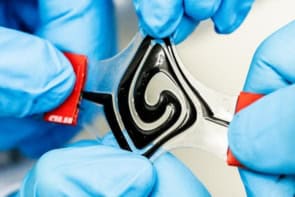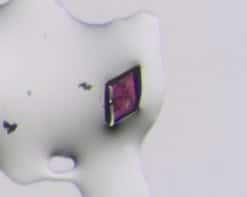From ferroelectrets and thermoelectrics to photovoltaics and inductive power transfer, Steve Beeby showed attendees of innoLAE 2018 how research at Southampton was making progress towards textiles with energy harvesting properties. While energy scavenged from the environment can come in small packages that are difficult to make use of, Beeby also showed how it was possible to use a coil embedded in your favourite chair to charge your mobile phone.
“Textiles are the most common kind of material we come into contact with,” Beeby told nanotechweb.org following his talk. “They’re found in clothes obviously, but also home interiors, car interiors, bedding – so there’s lots of places that you can put the technology.” Yet while their ubiquity may be convenient, textiles have a number of properties that are far from ideal for fabricating electronic devices.
Overcoming fluff and hot air
“The challenge is textiles are rough and fluffy surfaces for depositing thin films,” Beeby told delegates of innoLAE 2018 in his presentation. He and his team have used a screen-printed interface layer to reduce the roughness of a typical fabric from 150 mm to just a few micrometres. They could then spray on fabric organic solar cell devices that operate with a power conversion efficiency approaching glass-substrate-based counterparts.
Of course fluffiness is not the only challenge as textiles are also generally intolerant of the high processing temperatures used to fabricate conventional energy harvesting devices. In some cases Beeby and his co-workers have managed to reduce the processing temperatures required; in others, such as the thermoelectric nanoparticle-based ink they developed from bismuth telleride powders, they used specialised glass fibres, which can handle the processing temperature of 250 °C required.
Beeby also showed delegates work with fabrics laminated with ferroelectret materials. Ferroelectrets are polymer foams, which can store charge in the foam voids that can be released in pulses under pressure. The resulting piezoelectric behaviour can be useful in energy harvesting. By using fluorinated ethylene propylene (FEP), which holds charge better than polydimethylsiloxane (PDMS), and optimizing the geometry of their device they were able to produce an excellent ferroelectret textile material.
“But the question we always get asked is can I charge my mobile phone with it?” said Beeby. With a system of near-field electromagnetic coupled coils they developed a wireless power transfer system that can . The system works well fitted into furniture upholstery so that you can charge your phone while relaxing in your favourite chair.
Driving forces
Far from curling up in a cosy chair, Beeby’s inspiration to work on electronic textiles came from a love of heavy-metal music in his teens. “Heavy-metal T shirts have a lot of silver and gold type inks on and it made me think why not print conductive materials on textiles and see if you can print circuits onto textiles – and that’s kind of how it started,” he told nanotechweb.org.
He adds that applications in healthcare are likely the driving force behind the current growth in the field. To operate health-monitoring or any other kinds of devices incorporated in garments, a source of power is key.
For more on innoLAE 2018 visit http://www-large-area-electronics.eng.cam.ac.uk/innoLAE2018.



